
Filter News
Area of Research
- (-) Fusion and Fission (8)
- (-) Materials (74)
- (-) Supercomputing (88)
- Advanced Manufacturing (22)
- Biology and Environment (106)
- Biology and Soft Matter (1)
- Building Technologies (1)
- Computational Biology (1)
- Computational Engineering (2)
- Computer Science (9)
- Electricity and Smart Grid (3)
- Energy Science (164)
- Functional Materials for Energy (1)
- Fusion Energy (1)
- Isotopes (1)
- Materials for Computing (5)
- Mathematics (1)
- National Security (26)
- Neutron Science (29)
- Nuclear Science and Technology (7)
- Quantum information Science (1)
- Sensors and Controls (1)
News Topics
- (-) 3-D Printing/Advanced Manufacturing (28)
- (-) Artificial Intelligence (39)
- (-) Environment (36)
- (-) Grid (10)
- (-) Physics (35)
- (-) Quantum Computing (21)
- Advanced Reactors (11)
- Big Data (22)
- Bioenergy (18)
- Biology (15)
- Biomedical (23)
- Biotechnology (2)
- Buildings (8)
- Chemical Sciences (34)
- Clean Water (3)
- Composites (9)
- Computer Science (99)
- Coronavirus (17)
- Critical Materials (15)
- Cybersecurity (8)
- Education (1)
- Energy Storage (37)
- Exascale Computing (27)
- Fossil Energy (1)
- Frontier (33)
- Fusion (28)
- High-Performance Computing (46)
- Irradiation (1)
- Isotopes (15)
- ITER (6)
- Machine Learning (15)
- Materials (80)
- Materials Science (84)
- Mathematics (2)
- Microscopy (29)
- Molten Salt (3)
- Nanotechnology (42)
- National Security (8)
- Neutron Science (43)
- Nuclear Energy (46)
- Partnerships (13)
- Polymers (18)
- Quantum Science (33)
- Security (7)
- Simulation (19)
- Software (1)
- Space Exploration (5)
- Summit (43)
- Transportation (21)
Media Contacts
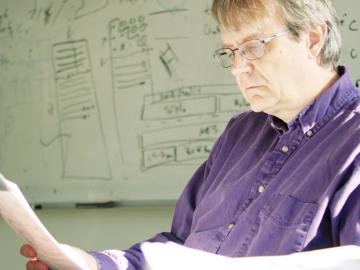
More than 1800 years ago, Chinese astronomers puzzled over the sudden appearance of a bright “guest star” in the sky, unaware that they were witnessing the cosmic forge of a supernova, an event repeated countless times scattered across the universe.
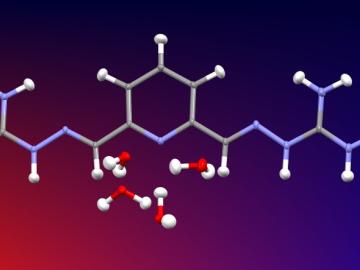
Researchers used neutron scattering at Oak Ridge National Laboratory’s Spallation Neutron Source to investigate the effectiveness of a novel crystallization method to capture carbon dioxide directly from the air.
OAK RIDGE, Tenn., Feb. 12, 2019—A team of researchers from the Department of Energy’s Oak Ridge and Los Alamos National Laboratories has partnered with EPB, a Chattanooga utility and telecommunications company, to demonstrate the effectiveness of metro-scale quantum key distribution (QKD).
Scientists at the Department of Energy’s Oak Ridge National Laboratory (ORNL) have developed a process that could remove CO2 from coal-burning power plant emissions in a way that is similar to how soda lime works in scuba diving rebreathers. Their research, published January 31 in...
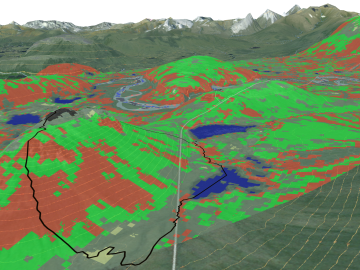
A team of scientists led by Oak Ridge National Laboratory used machine learning methods to generate a high-resolution map of vegetation growing in the remote reaches of the Alaskan tundra.

A team of scientists has for the first time measured the elusive weak interaction between protons and neutrons in the nucleus of an atom. They had chosen the simplest nucleus consisting of one neutron and one proton for the study.

Scientists at the Department of Energy’s Oak Ridge National Laboratory have created a recipe for a renewable 3D printing feedstock that could spur a profitable new use for an intractable biorefinery byproduct: lignin.
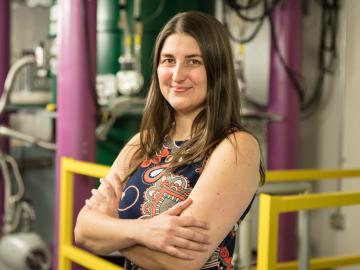
Leah Broussard, a physicist at the Department of Energy’s Oak Ridge National Laboratory, has so much fun exploring the neutron that she alternates between calling it her “laboratory” and “playground” for understanding the universe. “The neutron is special,” she said of the sub...
Physicists turned to the “doubly magic” tin isotope Sn-132, colliding it with a target at Oak Ridge National Laboratory to assess its properties as it lost a neutron to become Sn-131.
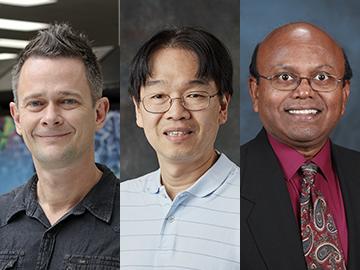
Three researchers from the Department of Energy’s Oak Ridge National Laboratory have been elected fellows of the American Physical Society (APS). Fellows of the APS are recognized for their exceptional contributions to the physics enterprise in outstanding resear...


